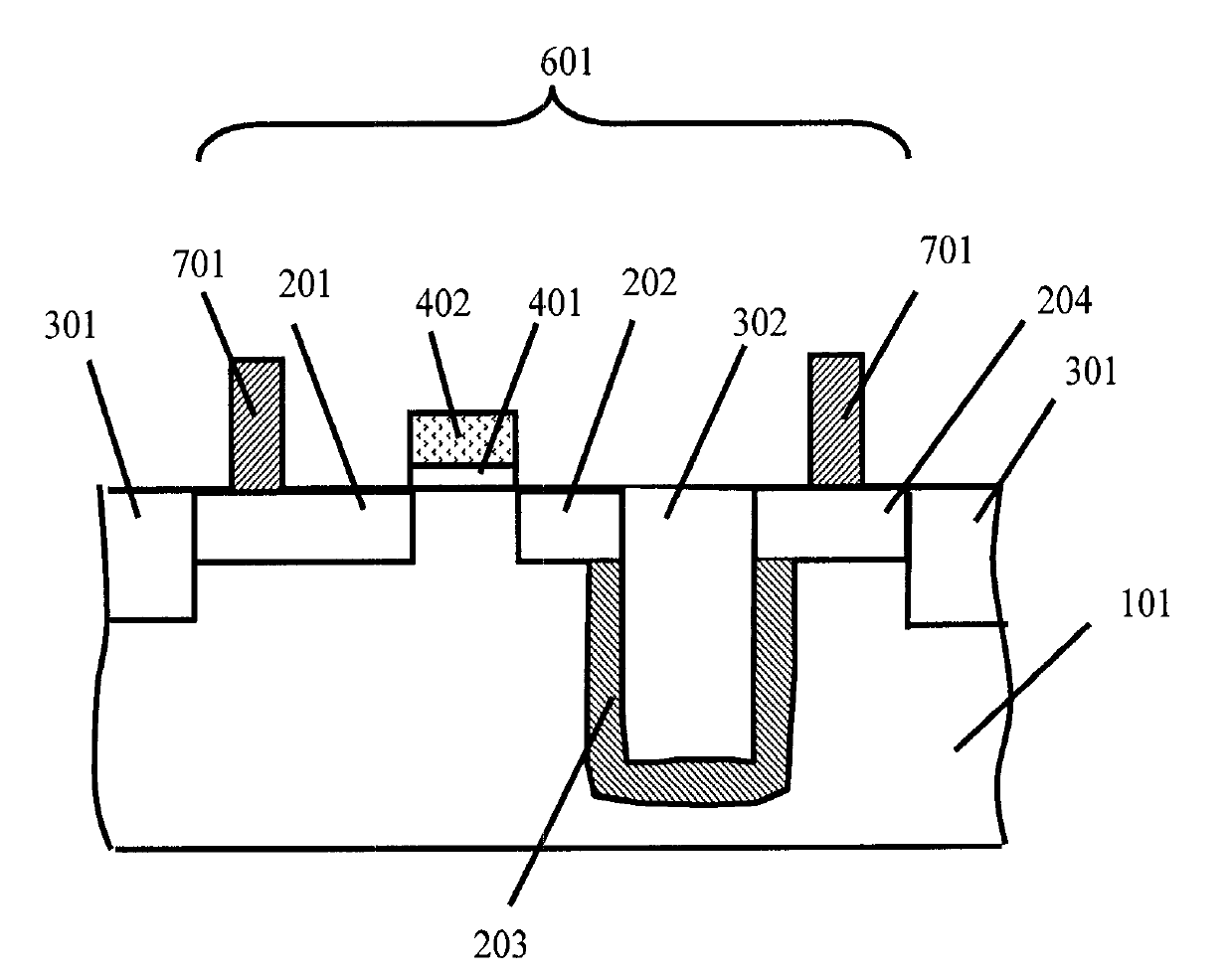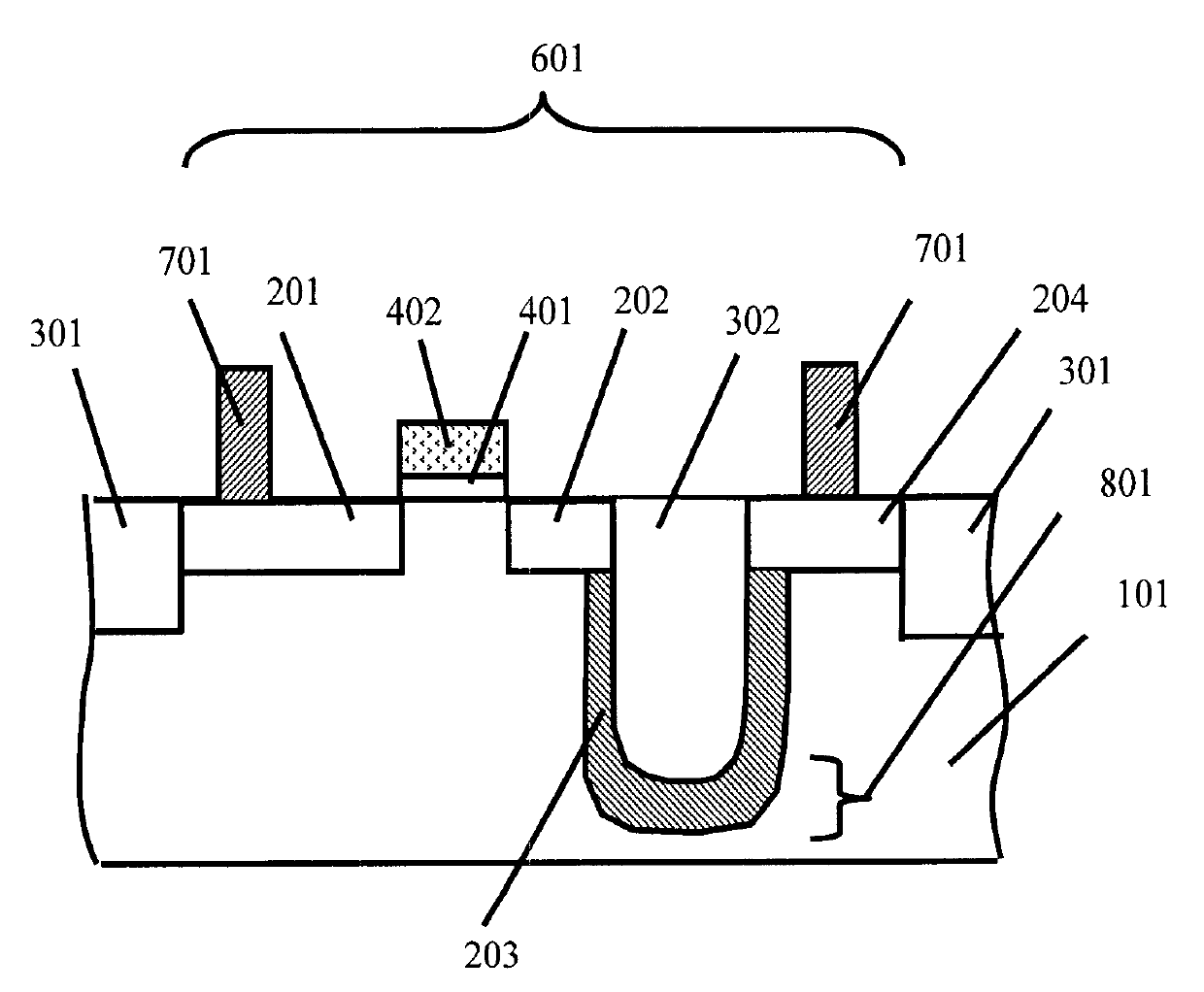Semiconductor device
A technology of semiconductors and transistors, applied in the field of semiconductor devices, can solve the problems of ESD protection function damage, current concentration, cost increase, etc.
- Summary
- Abstract
- Description
- Claims
- Application Information
AI Technical Summary
Problems solved by technology
Method used
Image
Examples
Embodiment 1
[0019] 1 is a schematic cross-sectional view showing a first embodiment of an N-type MOS transistor for ESD protection of a semiconductor device according to the present invention.
[0020] On a P-type silicon substrate 101 that is a semiconductor substrate of the first conductivity type, a source region 201 and a drain region 202 composed of a pair of N-type high-concentration impurity regions are formed, and are formed between other elements. The trench isolation region 301 of shallow trench isolation is used for insulation isolation.
[0021] Between the source region 201 and the drain region 202, in the upper part of the channel region of the P-type silicon substrate 101, a gate insulating film 401 made of a silicon oxide film or the like is formed and formed of a polysilicon film or the like. The gate electrode 402. Here, a trench isolation region 302 for ESD protection is formed in a region in contact with the drain region 202, and the depth in the vertical direction of...
Embodiment 2
[0027] 2 is a schematic cross-sectional view showing a second embodiment of an N-type MOS transistor for ESD protection of a semiconductor device according to the present invention.
[0028] The difference from the first embodiment shown in FIG. 1 is that the corners of the bottom surface of the ESD protection trench isolation region 302 in which the drain extension region 203 is formed are rounded to form a rounded trench isolation. Area bottom surface 801 .
[0029] When a large forward current is applied from the outside, the current applied as the forward current of the diode caused by the junction of the N-type of the drain region of the N-type MOS transistor 601 for ESD protection and the P-type of the substrate is released. In this case, the effective drain region of the N-type MOS transistor 601 for ESD protection becomes the region combining the drain region 202, the drain extension region 203, and the drain contact region 204. However, as shown in FIG. The shape of ...
PUM
 Login to View More
Login to View More Abstract
Description
Claims
Application Information
 Login to View More
Login to View More - Generate Ideas
- Intellectual Property
- Life Sciences
- Materials
- Tech Scout
- Unparalleled Data Quality
- Higher Quality Content
- 60% Fewer Hallucinations
Browse by: Latest US Patents, China's latest patents, Technical Efficacy Thesaurus, Application Domain, Technology Topic, Popular Technical Reports.
© 2025 PatSnap. All rights reserved.Legal|Privacy policy|Modern Slavery Act Transparency Statement|Sitemap|About US| Contact US: help@patsnap.com


